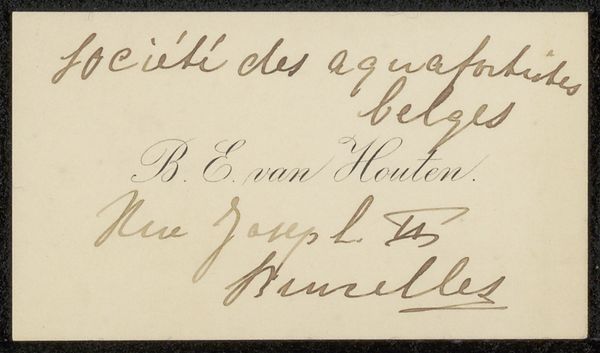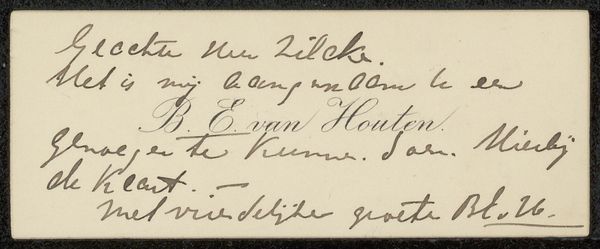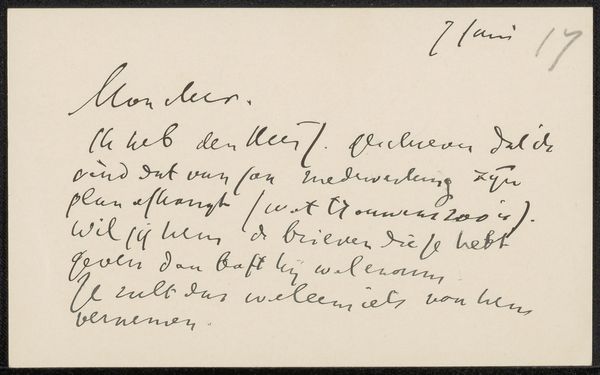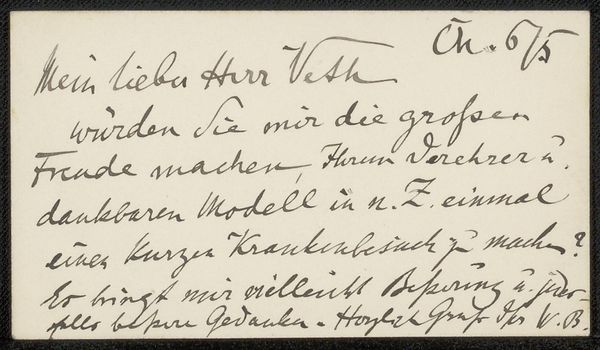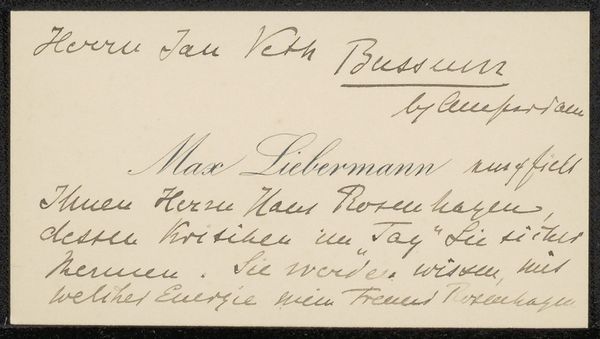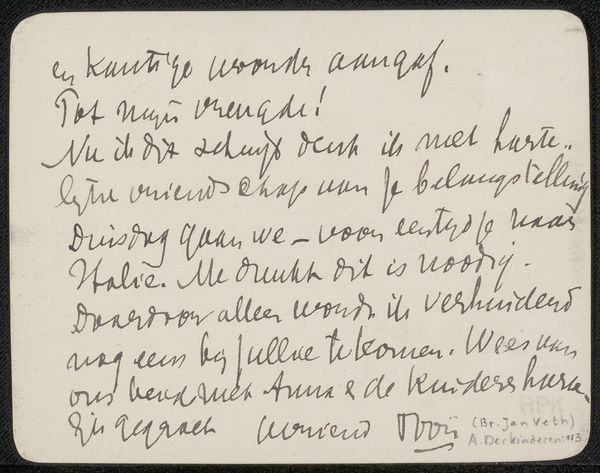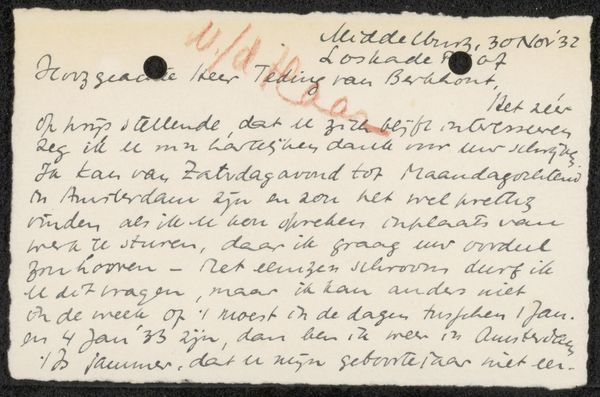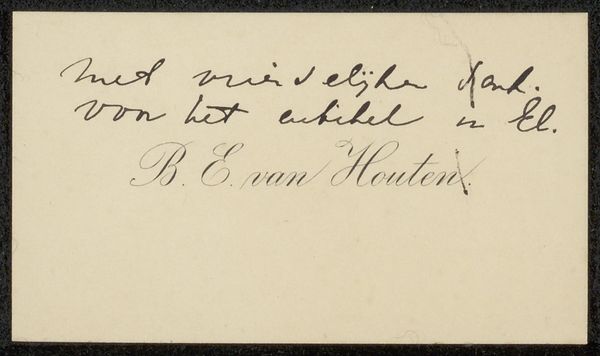
drawing, ink, pen
#
portrait
#
drawing
#
script typography
#
hand-lettering
#
hand drawn type
#
feminine typography
#
hand lettering
#
ink
#
hand-drawn typeface
#
thick font
#
typography style
#
pen
#
handwritten font
#
small lettering
Copyright: Rijks Museum: Open Domain
Curator: Here we have a calling card inscribed by Barbara Elisabeth van Houten, sometime between 1872 and 1930. It’s an ink drawing using both pen and brush. Editor: It reads like a breathless invitation! The hurried, looped script, contained within this tiny rectangle of paper... it’s incredibly intimate, isn't it? Curator: Absolutely. Consider the historical context: visiting cards like these served as formal introductions, or expressions of thanks. But here, van Houten subverts that formality, using handwriting, typically seen as personal and domestic, in this space of social transaction. It seems a way to subtly transgress societal expectations for women in the arts at the time. Editor: The act of handwriting itself fascinates me. You can feel the pressure of the pen on the paper, the speed of her hand, and the very immediate thought process materialized directly onto the surface. Did she labor over it? Or dashed it off with great excitement? It provides unique access to the artist's labor and mental processes. Curator: The labor is especially intriguing considering the performance of femininity in that era. Handwriting, calligraphy even, were seen as accomplishments for young women, yet rarely elevated to the level of "art." The gesture here might question the definitions of work deemed “worthy” or “artistic” based on gendered expectations. The message asks Zilcken to “please leave the portfolio." What importance was attached to that object and to its movement? Editor: Precisely! And consider the material—simple ink, paper—items easily accessible, associated with the domestic sphere but used here to transmit art and make an assertive request. What stories could this exchange tell about the artistic collaborations of that era? And what was Zilcken's relationship with van Houten that inspired such a personalized note? Curator: By centering the card around female artistry, and the everyday tools of the trade, we might even see the message itself and its particular tone as the true focus. Not just about borrowing material, but about claiming one’s stake in an environment where male voices typically predominated, thereby performing resistance within expected social scripts. Editor: Looking at it this way, it prompts you to value not just the aesthetic but the labor that goes into artmaking, both physical and intellectual. I think that perspective shifts how we approach other artwork of this period. Curator: Indeed. I'll never see visiting cards in the same light.
Comments
No comments
Be the first to comment and join the conversation on the ultimate creative platform.
